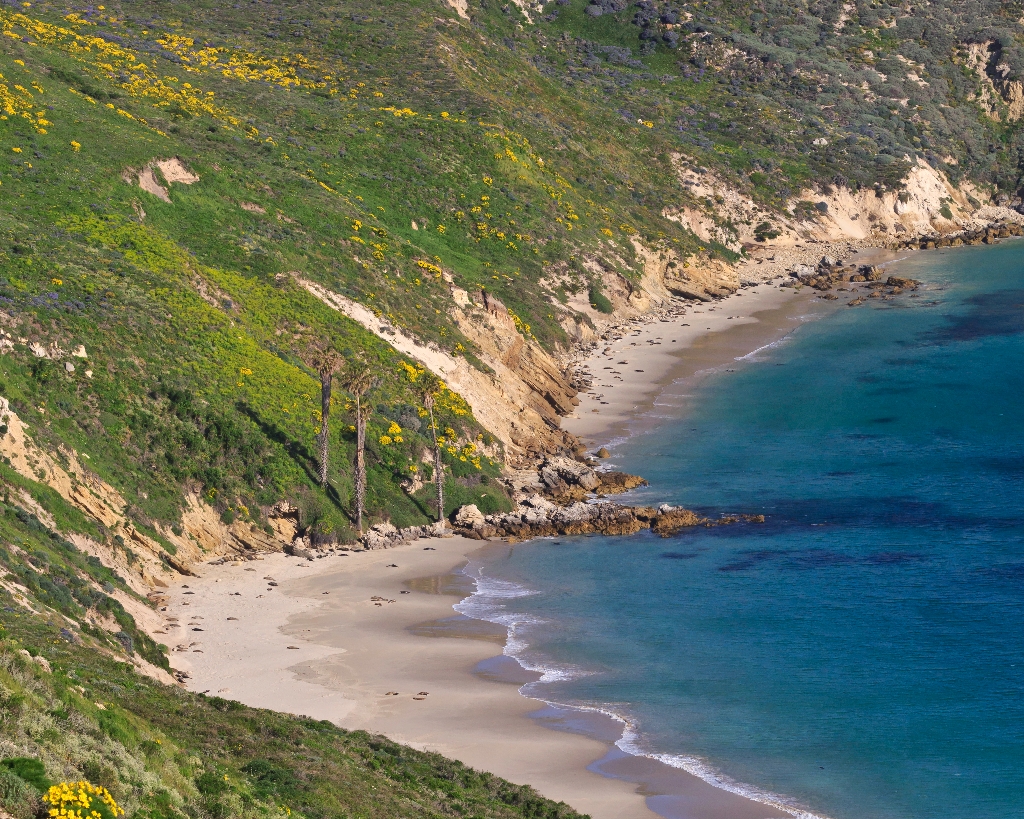
The palm trees adjacent to the later pier site have elicited conversation for years. The popular notion has been that the trees remain from the filming of Mutiny on the Bounty, but this story appears to be a myth. Photographs and testimony provided by islands historian Marla Daily claim that the Washingtonian palms were planted by Ben Hughey and his friends in 1964, with others planted in 1970. The trees stand out as a landmark on the scenic beach at Cuyler Harbor.
Nevertheless, San Miguel Island did play a role in Mutiny On the Bounty. In 1935 producer Irving Thalberg put his talent to work on one of the greatest sea stories ever filmed: Mutiny On the Bounty. To film it, he used several locations. A camera crew went to Tahiti twice for the crowd shots and scenic background. The major scenes were shot in Catalina, and for rough seas he used the waters off San Miguel Island. He sent out an old 200 foot three-master with the outside reworked to match the period and shot footage for a storm sequence, but the pitch and toss of the angry ocean was not convincing. Then someone suggested that they build a smaller model of the Bounty so that the contrast with the large waves would produce more drama. The result was the Baby Bounty, an 18-foot exact replica, just big enough to hold two men to steer it. It was towed to sea by the mother ship, and all the crew was sworn to secrecy so that the public would never know the difference. Finding heavy seas off San Miguel was no problem, and they began to shoot; but the rough seas soon separated Baby from the larger Bounty and the small ship could not even be found. Afraid to call the Coast Guard because it would get into the newspapers, Thalberg hired several private ships to comb the waters. Two nights later the Baby Bounty and its two occupants were rescued.
Thalberg was particularly alarmed by this event because he had already lost an assistant cameraman while they were shooting a scene on a barge. The barge, W T Co #3, was a good-sized affair with a replica of the aft end of the Bounty built on one end of it. By taking on ballast at the other end, they could cause the partial replica to tip up and down as if it was about to sink. The cameraman, Glen Strong, was working with his camera on a tripod when the barge was suddenly swamped by a wave that washed his equipment and some valuable footage overboard. In attempting to save the equipment, Strong was drowned. Mrs. Lester recalls some Tahitian scenes being shot on the island, but this was not part of the original production schedule. Using San Miguel's waters for the rough-water shots helped add realism in the production of a memorable sea film that won the Academy Award for 1935's Best Picture of the Year.
Is there something we missed for this itinerary?
Itineraries across USA


















































